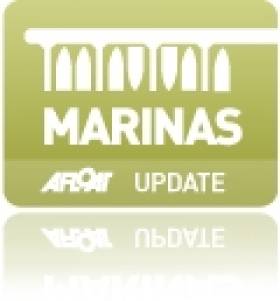Displaying items by tag: Passage East
Passage East Ferry Company Is Up For Sale
#FerryNews - A popular ferry service between Waterford and Wexford is up for sale, as The Irish Times reports.
The Passage East Ferry Company, which runs car ferry services across the River Suir between Passage East and Ballyhack, is putting itself on the market due to the pending retirement of its founder and operator Derek Donnelly.
In continuous operation since 1982, the company – which employs 16 people full time and has turned over around €1.6 million per year over the last five years – experienced a 5.4% rise in passenger numbers in 2015.
Accountants Crowe Horwath expect the sale "will generate significant interest, not in the domestic and international markets". The Irish Times has more on the story HERE.
Passage East Pontoon. Berths for Boats in County Waterford
Message in a Bottle Lands in Waterford After Eight Years At Sea
#MESSAGE IN A BOTTLE - It took eight years to cross the Atlantic, but a message in a bottle sent by two girls from eastern Canada finally found a recipient - in Co Waterford.
As the Irish Independent reports, 10-year-old Oisin Millea found the letter encased in a 2-litre soft drink bottle more than a week ago among litter from the sea strewn across the beach at Passage East.
And thanks to the wonders of the internet, he was able to contact the girls who sent the message - and even see them on his computer screen via Skype.
RTÉ News says it got in touch with the two French-Canadians, who were aged 12 when they sent the bottle into the sea via the St Lawrence River in Quebec back in the summer of 2004.
Charlene Dalpé and Claudia Garneau, now 20 years old, told the Irish Independent that they have remained friends since, and described Oisin's discovery as "really exciting".
Waterfront Property at Foynes and Passage East
A significant commercial and industrial facility immediately opposite the entrance to Foynes port is being sold on the instruction of Shannon Foynes Port Company.
A former Pilot Station Building, Passage East, Co. Waterford is being sold on the instruction of the Port of Waterford. The 1500 sq. foot building is located within the village and in close proximity to the pier.
Perhaps either property can be the basis of a coastal home? If you're looking for inspiration, look no further than Sailing champion Brad Butterworth's new $3.9 million Auckland hideaway has won an architects' design prize in New Zealand.
The winning America's Cup skipper also stands to win a national award for his taste in housing. His Waiheke Island hideout, dubbed the Rock House, originally annoyed neighbours, who nicknamed it "Brad's Pit".


























































